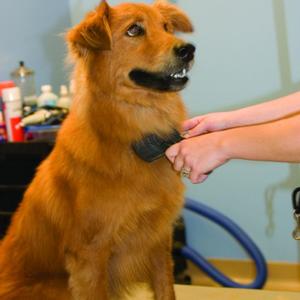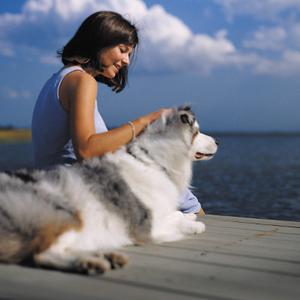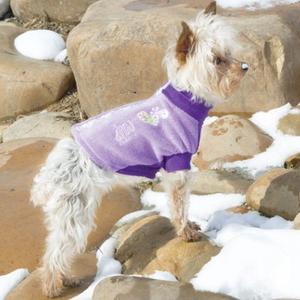My dog Doc is a fluffy pup, so he gets dirty very quickly. His legs, belly, and beard pick up dirt and water easily. I decided to groom him myself at home rather than take him to the groomer. Here are some things I learned about do-it-yourself dog grooming and bathing.
General Tips

Tools required: dog shampoo, towel, conditioner (optional), waterproof apron (optional), scissors/clippers, brush, treats.
Give your dog treats and praise as you work. It will make it more enjoyable for both of you. You can give him treats periodically or a long-lasting rawhide treat or toy with treats inside.
It helps to start grooming when they’re young to get them used to it. You should also pay attention to what your dog does and doesn’t like. If your dog hates nail trims, do that part last. If he loves getting brushed, make sure to spend some extra time brushing his coat out. You can also add in a little massage time at the end.
Brushing

You should brush your dog before the bath to get out any tangles or mats. Try out different combs and brushes until you find the best one for your dog’s coat. Some dogs have different lengths and styles on different parts of their bodies, so you might need a few different brushes.
Brush out mats by holding your pet’s fur close to the skin and gently working out the mat. Cut out mats that can’t be brushed out. Keep in mind that long-haired dogs might need daily brushings, while short-haired dogs are often fine with a brushing once a week.
Bath Time
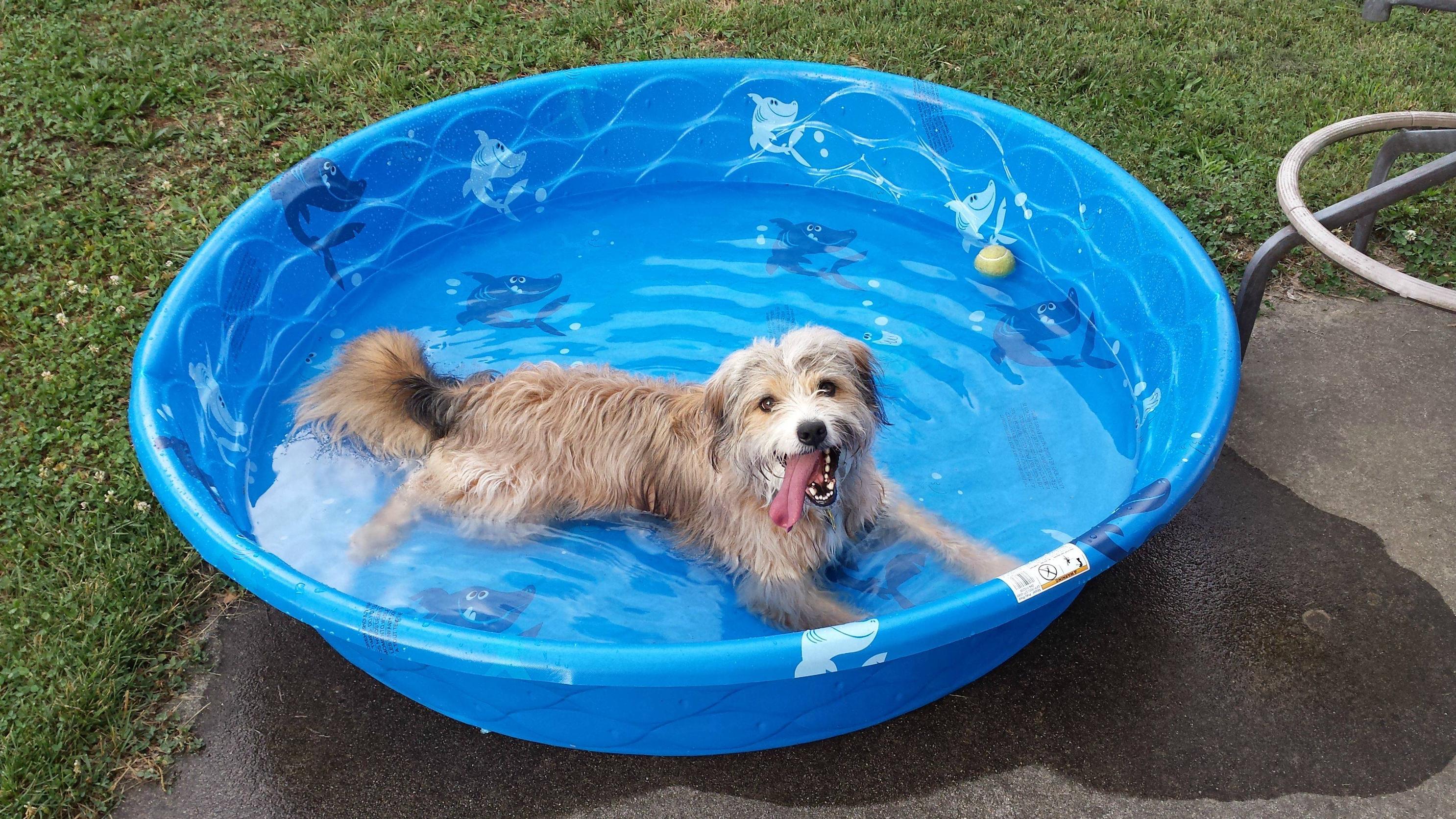
Most dogs only need to be bathed once every week or two. As you’re bathing your dog, use plenty of warm water to keep him nice and wet, and make sure to work the soap into your dog’s fur and skin. Start at the top and work your way down. My favorite dog shampoo is called Clear Advantages: Totally Natural Pet Shampoo by earthbath. It suds up really well, so I don’t need to use a lot.
Spend some extra time on your dog’s neck, where his collar normally is. It’s very important to keep that area clean. During the bath, do a quick check all over your dog’s skin for cuts, ticks, or irritated skin.
I usually wash Doc’s face last to prevent getting soap in his eyes or nose. To protect your dog’s eyes, you can put a drop of mineral oil around each eye. A cotton ball placed in each ear will help keep water out. When I rinse Doc’s face, I cover his eyes with my hand. His beard is hard to get completely clean, but it helps to keep it shorter.
You can also buy special products designed to keep your dog’s beard clean. Always rinse well to prevent your dog’s skin from drying out. If your dog has skin problems, use a shampoo that’s medicated or designed for sensitive skin and keep him in the tub to let the soap soak in for 15-30 minutes before rinsing. You can also buy coat conditioners that are either leave-in sprays or are rinsed out after.
Let your dog drip dry for a few minutes in the tub, then towel him dry. You can also buy special doggie dryers which can cost anywhere from $30 to $300, or you can use a regular hair dryer on a cool setting.
You can brush him out while you blow dry to help him dry faster. Be sure to dry your dog’s feet well. My vet recommends waiting 3 days before or after bathing to apply flea/tick meds, unless you use an oatmeal-based shampoo.
Haircut
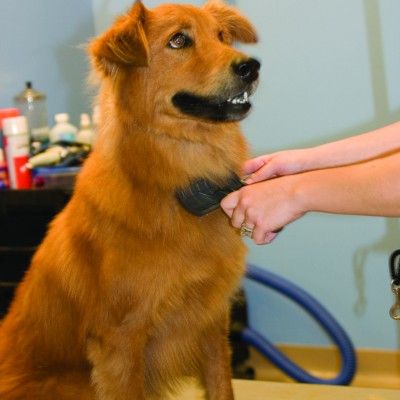
Right after a bath is the perfect time for basic coat maintenance. How to cut your dog’s hair is really up to you. You can keep the fur the same length all over with a puppy cut, or just trim certain parts. You could also try a haircut based on your dog’s breed. My mom’s Scottish Terrier mix looks great with a traditional Scottie haircut. Let your pet dry off about 75% before giving him a haircut, and be sure to brush his coat out.
It’s helpful to have someone help you keep your dog still. If your dog starts to squirm or seems stressed, give him some treats and take a quick break with a toy and some petting.
I usually keep Doc’s legs and belly trimmed pretty short so he doesn't pick up as much dirt and debris. I use scissors and eyeball the length by comparing it to my finger length. His leg fur is about as long as the first part of my index finger, and his belly fur is half the length of my finger. Hold the fur close to the skin to prevent nicking your dog with the scissors. Clippers can be set to a standard length so you don’t have to measure it yourself or worry about cutting your dog’s skin.
Your dog might have ticklish feet, so be careful to hold him still when you’re working on his feet. When trimming around the beard or face, be careful not to cut any whiskers, as that can be quite painful for your dog.
Consider both clippers and scissors for grooming tools. Clippers are great for getting an even haircut, but the noise can also bother your pet. Scissors are good for longer haircuts and getting spots like the feet and face. Scissors are better for pets who don’t like the noise hair clippers make, but it’s easier to nick your pet’s skin with scissors. Go for clippers that have different blade lengths and scissors that are short and sharp and have straight edges.
More Grooming Articles
Here are some more guides to dog bathing, grooming, nail trimming, ear cleaning, and teeth cleaning.



